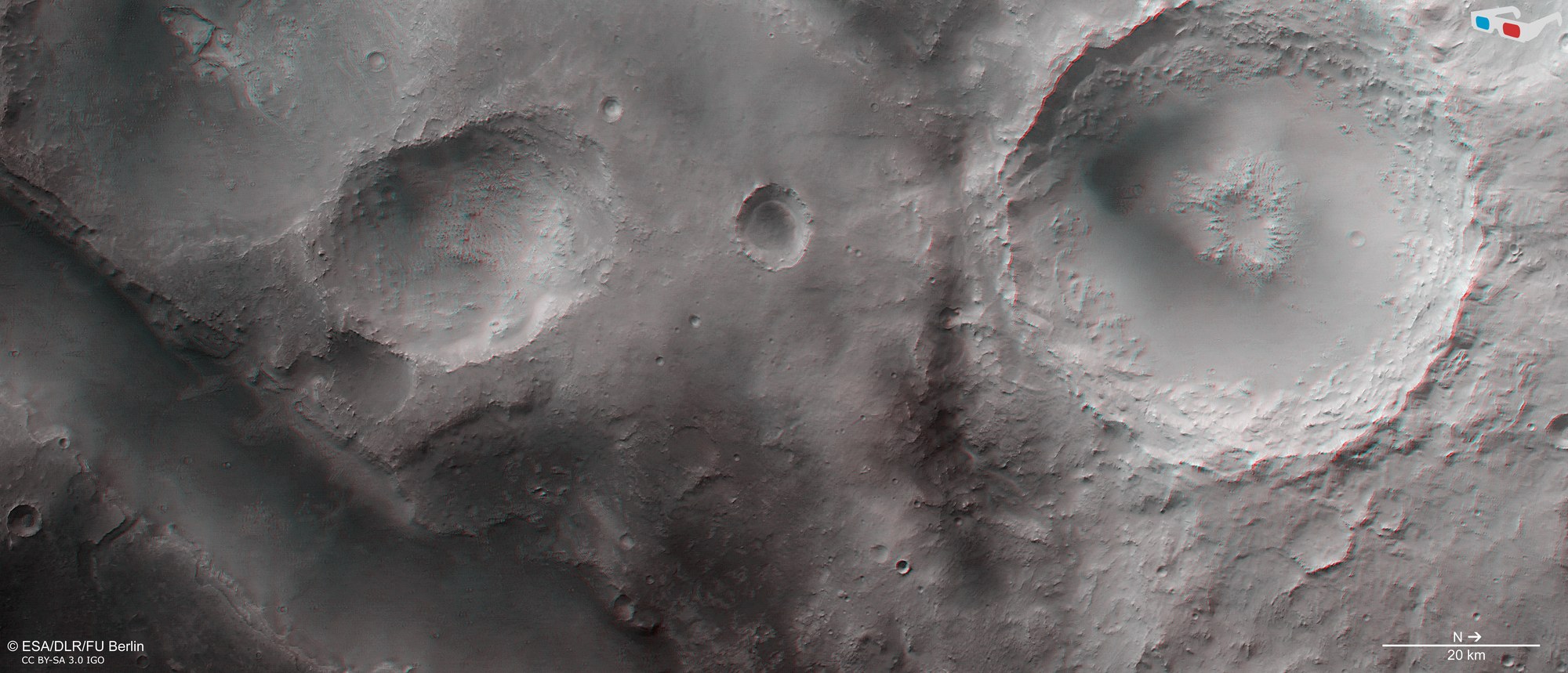3D view (anaglyph image) of Nili Fossae
3D view (anaglyph image) of Nili Fossae
The nadir channel, which is directed vertically down onto the surface of Mars, and one of the four stereo channels in the DLR-operated HRSC camera system, can be used to create anaglyph images, which produce a realistic, three-dimensional view of the landscape when viewed with red/blue or red/green glasses. In the southwest of the region (lower left), one of the grabens of Nili Fossae, which is over 1000 metres deep and has a striking, box-like profile, can be seen. The craters in this region are also especially striking. The large crater on the right contains a depression surrounded by hills that is thought to have been caused in a steam explosion during the formation of the crater.
Copyright note:
As a joint undertaking by DLR, ESA and FU Berlin, the Mars Express HRSC images are published under a Creative Commons licence since December 2014: ESA/DLR/FU Berlin, CC BY-SA 3.0 IGO. This licence will also apply to all HRSC images released to date.

